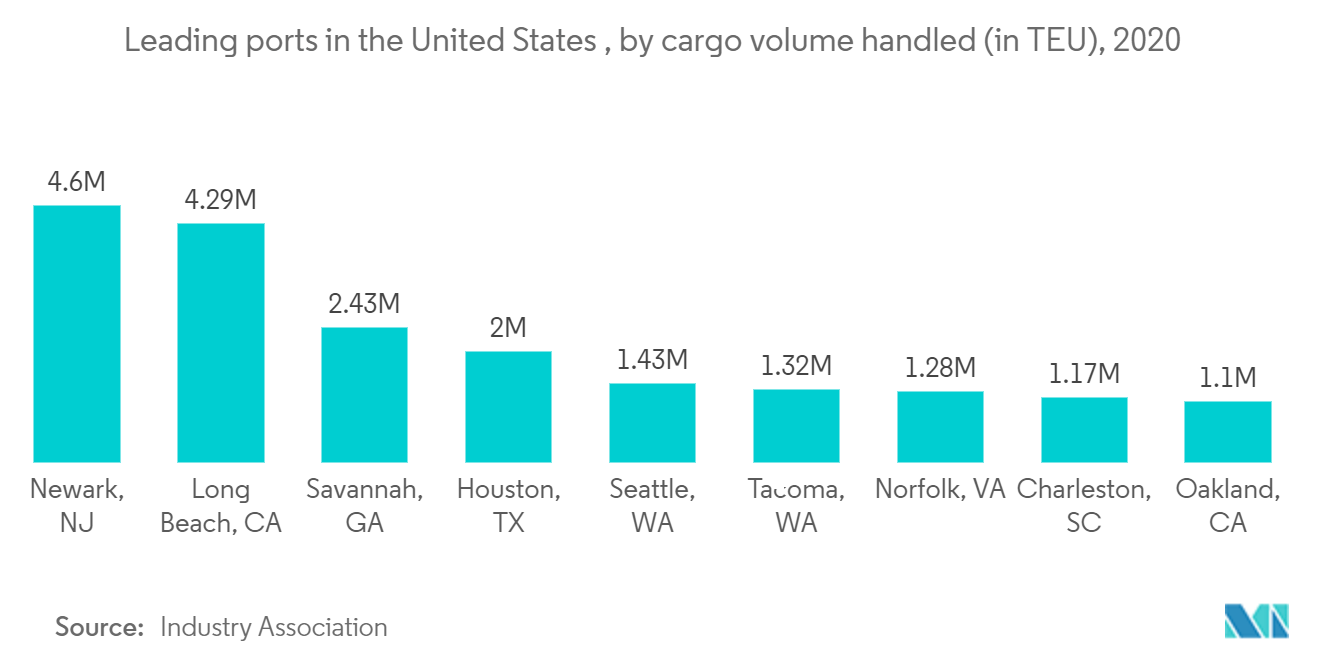Market Trends of North America Shipping Agency Industry
This section covers the major market trends shaping the North America Shipping Agency Market according to our research experts:
Increase Marintime Trade Boosting the market
As per the Maritime Publications, around 80% of the global trade by Volume and 70% of global trade by value are carried out via sea and are completely controlled by ports all over the world. Moreover, the rapid expansion of developing countries and globalization are expected to play a major role in increasing maritime trade.
In North America, 76% of all trade involves some type of maritime transportation. This percentage rises to 90 percent of global trade. Ships move USD 1.5 trillion in and out of US ports each year, and ports support more than 13 million jobs. There are 15,000 miles of waterways, seaports, and other commercially navigable waters in the United States. The U.S. ranks 1st in global naval capability, but only 21st in commercial (merchant marine) capacity. The People's Republic of China is ranked 2nd in both.
While land transport dominates Canada-U.S. trade, Canada relies heavily on a competitive international shipping industry to transport its trade with countries other than the United States. Every year, ships registered in foreign countries carry approximately 99.9% of Canada's deep-sea (non-U.S.) cargo.

Increased US Government Funding
Through the Maritime Administration's Port Infrastructure Development Program, the US Department of Transportation announced more than USD 703 million in funding for 41 projects in 22 states and one territory to upgrade port infrastructure. The funding, made possible by the Bipartisan Infrastructure Act and additional Congressional appropriations, will benefit coastal seaports, Great Lakes ports, and inland river ports, assisting in the improvement of supply chain reliability through increased port capacity and resilience, more efficient operations, lower port emissions, and new workforce opportunities. These efforts, when combined, will help bring items to shelves faster and decrease prices for American people.
The Port Infrastructure Development Program (PIDP) supports efforts by ports and industry stakeholders to improve port and related freight infrastructure to meet the nation's freight transportation needs and ensure our port infrastructure can meet anticipated growth in freight volumes. It also includes a statutory set-aside for small ports to continue to improve and expand their capacity to move freight reliably and efficiently and support local and regional economies.


